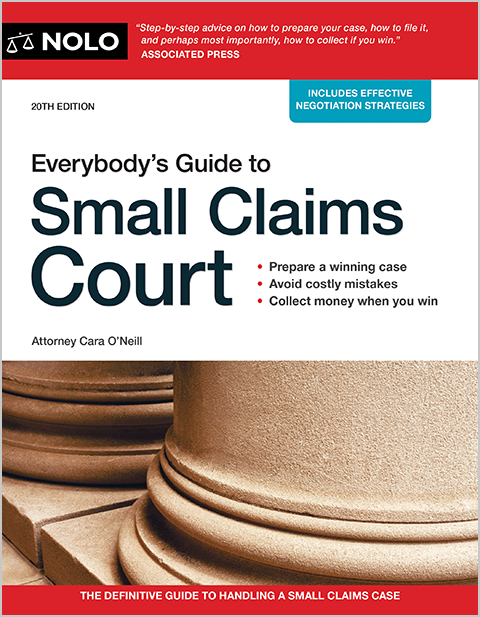If a pedestrian shares fault for a traffic accident, how will that affect an injury claim against the driver?
When it comes to car accidents involving pedestrians, it's not always obvious that a driver is to blame. Here's what to know :
- Both pedestrians and drivers must act with reasonable care on the roads and highways, and anyone's failure to act in line with this "duty of care" can amount to negligence.
- Contrary to the popular adage "pedestrians always have the right of way," a pedestrian can share fault for an accident, especially if they were "jaywalking" or disobeying a traffic signal at the time of the accident.
- State-specific rules on "shared fault" dictate how an injured pedestrian's insurance claim or lawsuit will be affected if they're partly to blame for the accident.
- Fault for Car-Versus-Pedestrian Accidents
- Can Pedestrians and Drivers Both Be Negligent?
- What Happens to a Pedestrian's Injury Case If They're Partly At Fault?
- What Kinds of Damages Are Available After a Pedestrian-Car Accident?
- What Are a Pedestrian's Options for Car Accident Injuries?
- What's the Statute of Limitations in Pedestrian-Car Accident Claims?
- Getting Help After a Pedestrian-Car Accident
Fault for Car-Versus-Pedestrian Accidents
Car-versus-pedestrian accidents usually involve a disparity of damage—significant injuries to the pedestrian coupled with little or no damage to the vehicle, and no injuries to its occupants.
Pedestrians are certainly in a vulnerable position on the road. And there are plenty of traffic accident scenarios in which a vehicle driver is clearly at fault for hitting a pedestrian. Running a stoplight, failing to stop at a designated crosswalk, and making a right turn on a red light in front of a crossing pedestrian are just a few common examples.
But car accidents involving pedestrians don't often occur outside the roadway; and pedestrians are the ones who typically determine when, and whether, they leave a sidewalk or highway shoulder to enter a roadway.
So, how to sort it all out from a legal standpoint? As with most other personal injury claims, the law of negligence determines fault in accidents between vehicles and pedestrians.
Can Pedestrians and Drivers Both Be Negligent?
Yes. A key concept of personal injury law says that every person is expected to exercise a reasonable level of care in any given situation. For example, drivers and pedestrians are expected to obey traffic laws and the "rules of the road" when using the streets, highways, crosswalks. If Person A fails to act with reasonable care and ends up causing harm to Person B (or their property), the law considers Person A negligent, regardless of who was driving and who was walking.
Insurance adjusters (in insurance claims judges) or judges and juries (in lawsuits) look at all the relevant facts and rules to determine how the pedestrian and driver should have acted at the time of the accident.
Besides who obeyed (or disobeyed) a traffic rule, another important factor in calculating fault is due care: who exercised it, and who didn't? For example, even if a pedestrian had the right of way when crossing the street, if they were listening to music with headphones on, while texting, and failing to look both ways before crossing the street, a judge or jury is likely to impose a certain level of fault on the pedestrian.
This is because even though the pedestrian had the right of way, they still should have exercised due care by staying aware of their surroundings and doing everything they could reasonably do to avoid getting injured.
Learn more about proving fault for a traffic accident.
Is a Driver At Fault If a Pedestrian Is Hit While Jaywalking?
If a pedestrian is hit while jaywalking from between parked cars and into the path of an oncoming vehicle, and the driver of the vehicle can't avoid hitting the pedestrian, the pedestrian will probably be considered at fault for the accident.
Likewise, if the driver of the vehicle had sufficient time to take evasive measures, but those measures resulted in the driver crashing into the parked cars instead of hitting the pedestrian, the pedestrian may also be liable for any damage to the vehicles and for any injuries to the driver.
Learn more about how jaywalking can affect a pedestrian's injury claim.
What Happens to a Pedestrian's Injury Case If They're Partly At Fault?
Sometimes both a driver and pedestrian are at fault for a car accident. Recall the example above, where the pedestrian was jaywalking. If the driver was also speeding (going 45 in a 25 mph zone, let's say), both the pedestrian and the driver would probably be at fault for the accident.
In the rare event that an injured pedestrian's personal injury lawsuit goes to trial, if both the driver and a pedestrian are deemed to share liability, the outcome varies from state to state. A handful of states still follow a harsh rule known as "contributory negligence." Most states have adopted some version of a "comparative negligence" system. Let's take a look at how these rules work.
Contributory Negligence in Pedestrian-Car Accident Cases
Only a handful of states subscribe to this system. Essentially, under contributory negligence, if the defendant can show that the plaintiff's negligence contributed to the accident to any extent (even one percent), the plaintiff is barred from recovering anything at all from the defendant. This system can cause some pretty harsh results for plaintiffs, but the good news is that when it comes to car-pedestrian accidents, the contributory negligence rule is only followed in Alabama, Maryland, North Carolina, Virginia.
Note: Washington, D.C. also follows the contributory negligence rule in many personal injury scenarios, but a special law carves out an exception for pedestrians who are injured in traffic accidents. Under Code of the District of Columbia section 50-2204.52, a pedestrian can sue a motorist after a car-pedestrian accident, as long as the pedestrian's share of fault was 50 percent or less.
Comparative Negligence in Car-Versus-Pedestrian Cases
Comparative negligence allocates fault between parties. A defendant's liability may be reduced, but not necessarily eliminated, if the plaintiff is partly at fault for the accident. There are two variations of the comparative negligence system.
With pure comparative negligence, liability is split according to the percentage of fault. So, if the pedestrian is deemed 30 percent responsible, the driver is said to be 70 percent responsible, and the pedestrian's damages total $10,000, the pedestrian will be able to collect from $7,000 from the driver.
With modified comparative negligence, liability is split according to the percentage of the parties' fault, unless the pedestrian is deemed to be 50 percent or more at fault—or over 50 percent at fault, depending on the state. If the 50 percent (or > 50 percent at fault) threshold is met, the plaintiff is barred from recovering anything at all from the defendant.
Let's look back at the previous example of the jaywalking pedestrian and speeding driver, to explain how modified comparative negligence works. If the pedestrian sustained $50,000 in injuries and a judge or jury concluded that the pedestrian was 40% at fault while the reckless driver was 60% at fault, the pedestrian would be able to recover only $30,000. But if the judge or jury concluded that the pedestrian was 55% at fault, the pedestrian would recover nothing under modified comparative negligence rules.
Learn more about contributory and comparative negligence in car accident cases, and get the details on the car accident laws in your state.
What Kinds of Damages Are Available After a Pedestrian-Car Accident?
In the language of the law, the term "damages" refers to someone's compensable losses. After a car-pedestrian accident, it's possible for both the pedestrian and the driver to have a claim for damages against one another. But practically speaking, if the driver was uninjured and there's no real damage to the driver's vehicle, the driver isn't going to have much of a case.
The interplay of a given state's shared fault rules and the circumstances surrounding a car-pedestrian accident typically result in either:
- the injured pedestrian being able to pursue an injury claim against the driver (despite the pedestrian sharing some measure of fault), or
- the fault issue essentially acting as a barrier to the pedestrian's ability to recover any compensation at all after the accident.
An injured pedestrian—assuming they're able to pursue a claim against the driver's insurance company, or file a lawsuit—can usually recover for a wide variety of damages, including:
- medical bills and the cost of necessary future treatment
- income lost as a result of the accident, and the economic impact on the pedestrian's ability to earn a living going forward
- mental and physical "pain and suffering" resulting from the accident, the injuries, and necessary medical procedures, and
- loss of enjoyment, emotional distress, and other more subjective (non-economic) losses.
What Are a Pedestrian's Options for Car Accident Injuries?
As we touched on in the section above, how an injured pedestrian recovers compensation will depend on who was at fault for the accident, and where the accident occurred.
Are Pedestrians Covered Under No-Fault Car Insurance?
Generally speaking, if the accident occurs in a no-fault car insurance state, either the driver's or the pedestrian's own car insurance policy (specifically, their "personal injury protection" or "PIP" coverage) will pay to treat the pedestrian's injuries, even if the pedestrian was at fault.
So a jaywalking pedestrian can probably get at least one car insurance company to pay for medical bills and certain other economic losses, up to coverage limits. But keep in mind that compensation for pain and suffering and other non-economic losses are not available in a no-fault/PIP claim.
A Pedestrian Can Make a Claim Under the At-Fault Driver's Insurance
If the accident occurs in a traditional "fault" state, the pedestrian can recover from the other driver by making a third party car insurance claim under the driver's liability coverage, but unless the insurer accepts the argument that the driver was totally at fault for the accident, settlement might not be easy. Especially when injuries are significant and things get contentious, it may make sense to turn the matter over to an experienced attorney.
If the pedestrian was completely at fault for the accident, in a "fault state" the pedestrian's own health insurance policy may be the only avenue of payment for medical treatment. Learn more about using health insurance to pay for car accident injuries.
What's the Statute of Limitations in Pedestrian-Car Accident Claims?
A statute of limitations is a law that sets a time limit on the right to file a lawsuit after you've suffered some kind of injury or harm.
When a pedestrian is injured in a car accident, any lawsuit against the driver will be based on personal injury law, and each state has its own statute of limitations for these kinds of cases. Get details on the personal injury statute of limitations.
If the vehicle owner wants to make a claim against an at-fault pedestrian for vehicle damage, the state's statute of limitations for property damage lawsuits will come into play.
Getting Help After a Pedestrian-Car Accident
If you've been injured as a pedestrian in a car-versus-pedestrian incident, and the driver of the vehicle that hit you (or their insurer) is accepting anything less than full responsibility for what happened, it may be time to discuss your situation with an experienced attorney.
Find out more about how a car accident lawyer can help you and get tips on how to find the right one for your case.
- Fault for Car-Versus-Pedestrian Accidents
- Can Pedestrians and Drivers Both Be Negligent?
- What Happens to a Pedestrian's Injury Case If They're Partly At Fault?
- What Kinds of Damages Are Available After a Pedestrian-Car Accident?
- What Are a Pedestrian's Options for Car Accident Injuries?
- What's the Statute of Limitations in Pedestrian-Car Accident Claims?
- Getting Help After a Pedestrian-Car Accident



